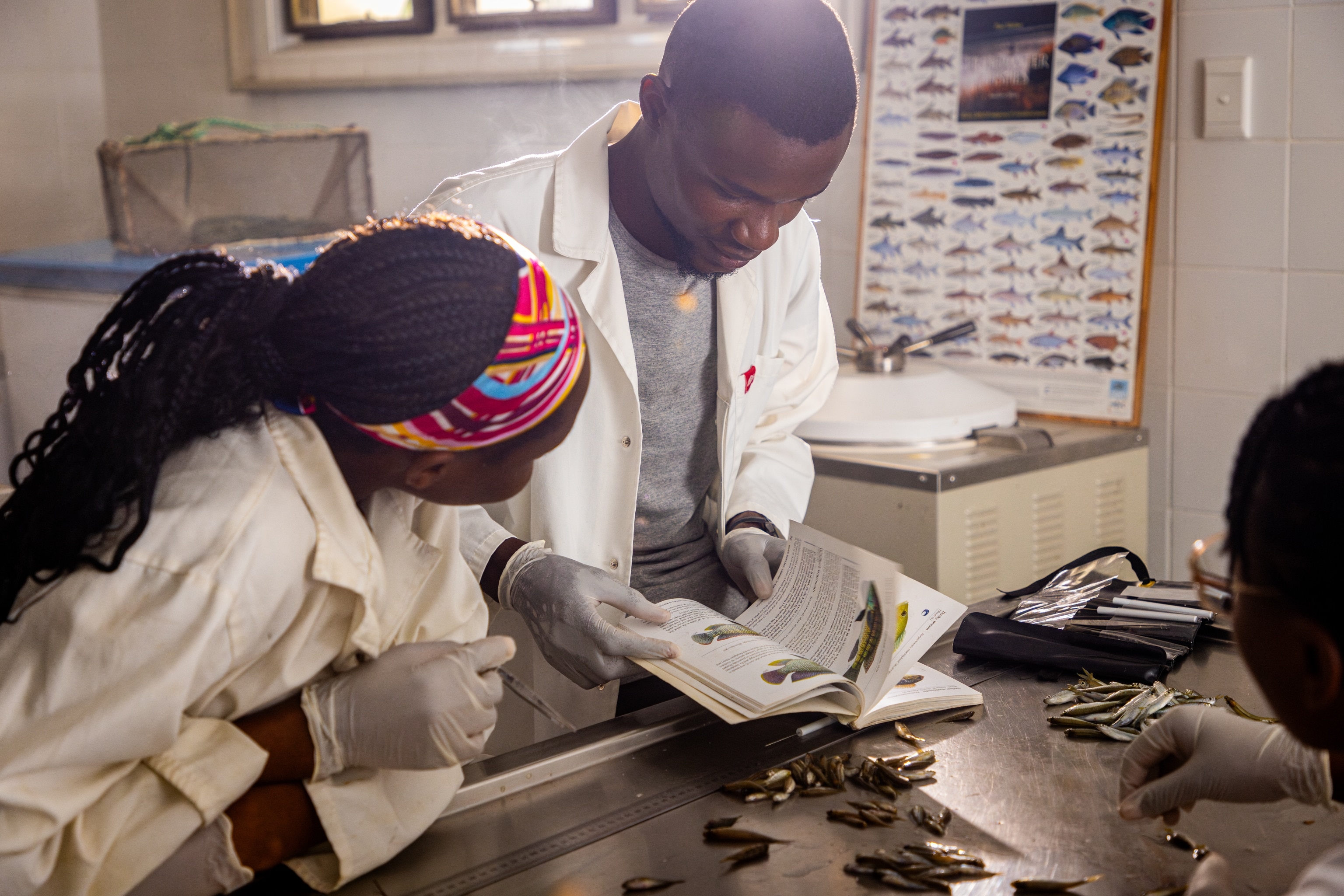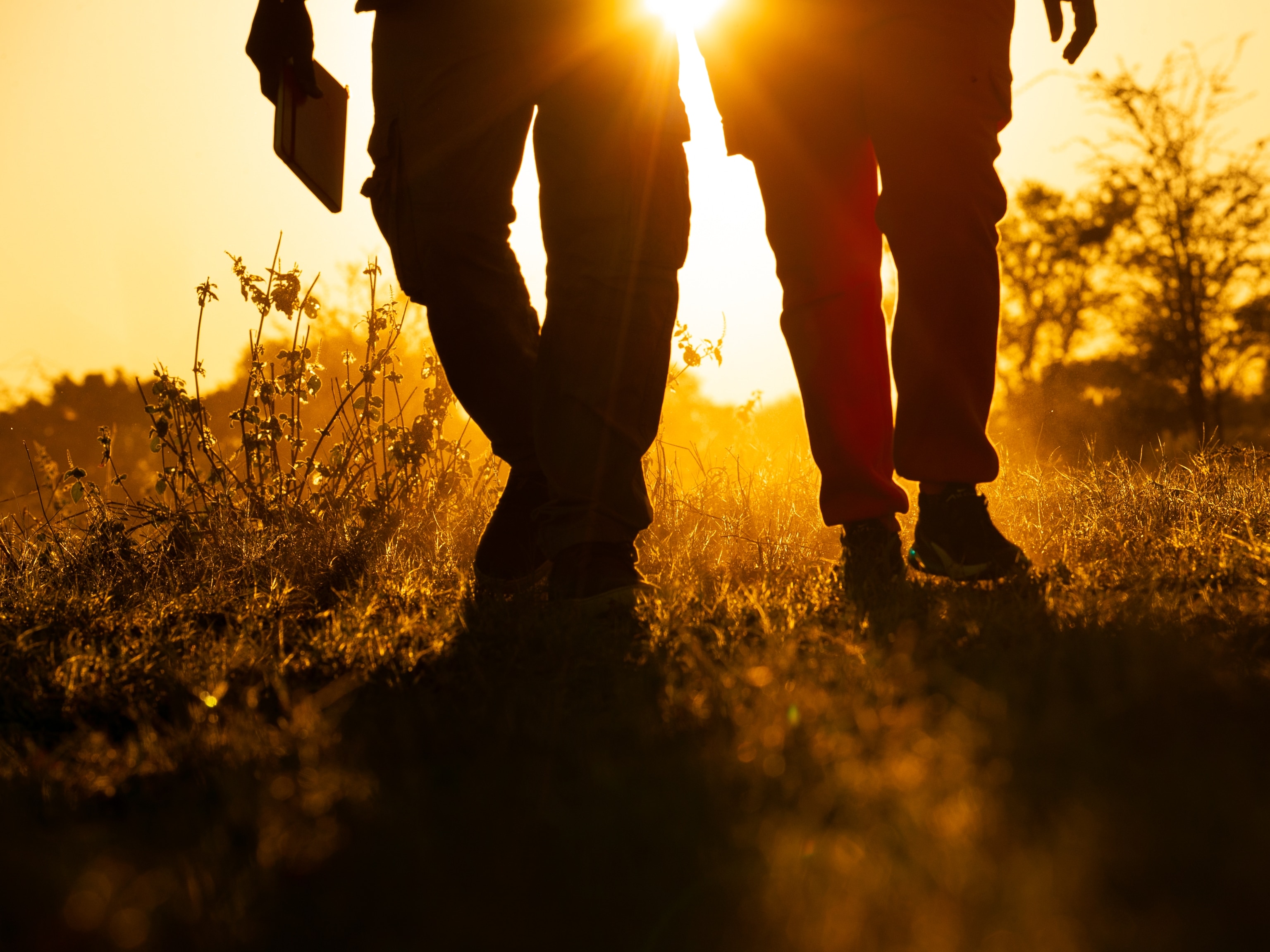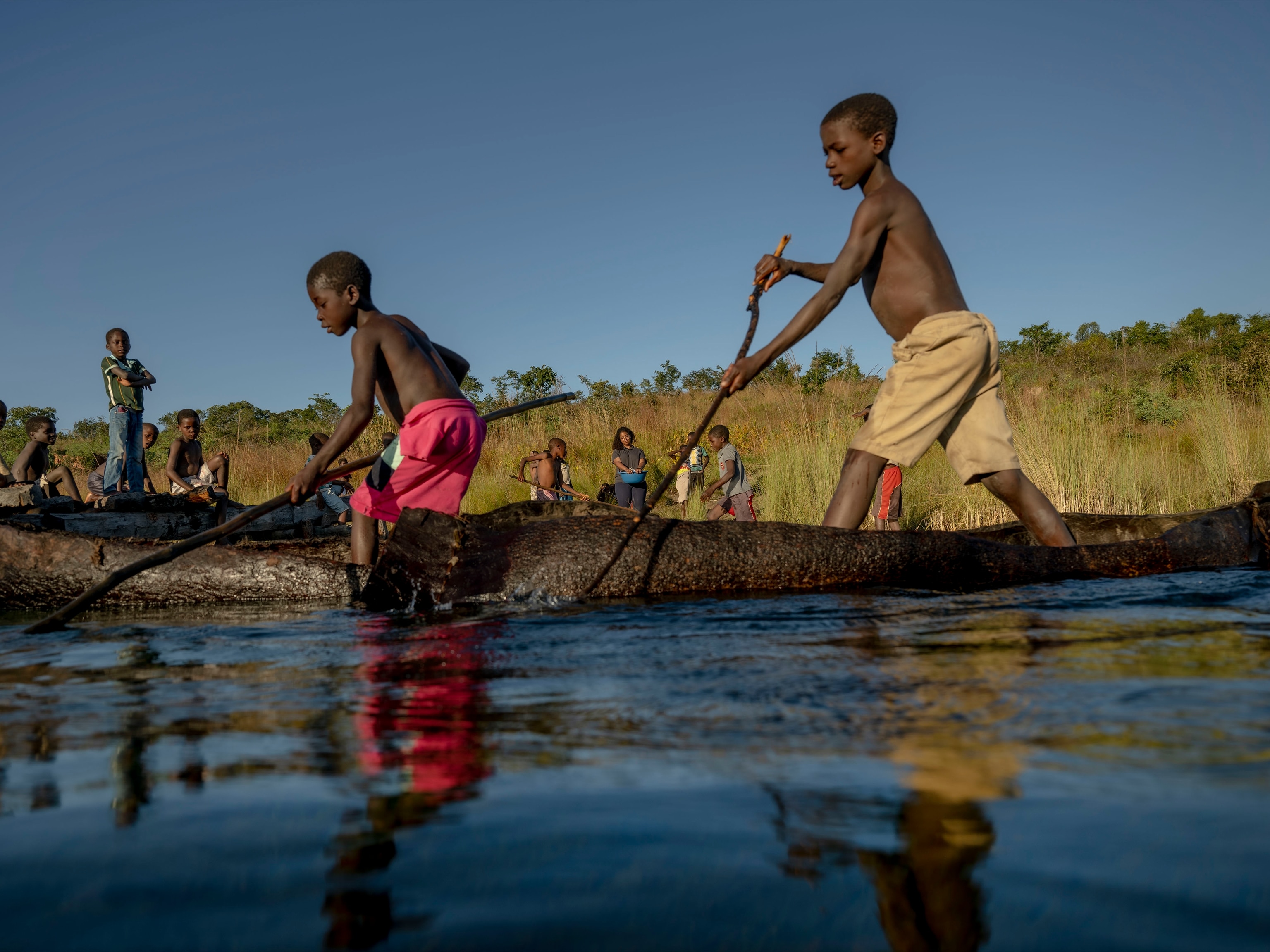Life on the line
A main lifeline of the Okavango River Basin, the Kavango River passes through Namibia, feeding the communities that live along its banks. Now, with declining fish stocks and malnutrition on the rise, one researcher draws on his childhood passion to keep this lifeline going.
As the sun becomes less intense, silhouettes of teenage boys stand along the water’s edge. With incredible deftness, each figure swings a homemade fishing weight around their head in hooping circles, faster and faster, until they send it hurtling into the river—starfishing their arms to the side as yards of line whistle into the water. Fishing is a way of life for communities that live along the Kavango in Namibia, a river the nation shares with both Angola, where it begins, and Botswana as it makes its way down into the Okavango Delta. Increasingly, to catch nothing is to go hungry.

“Over the years the stock along our rivers has been on the decline,” says Vilio Muunda, a Fisheries Biologist and PhD researcher, who’s seen the waters change, partly due to climate. “Only about 5 percent of the country receives more than 500mm of rainfall a year, and currently we’re in the midst of the worst drought in over 100 years.”
A dry country means few permanent rivers, hence the need for the population to congregate along them, especially in the Caprivi Strip, the panhandle-shaped northeastern region of Namibia that reaches out for a piece of the Kavango River. For this lifeline to keep on giving, its ecology relies on flood pulses that come down from Angola—an event that Vilio remembers fondly and inspires his research today. “When I was young, I would go fishing with my friends and cousins in the shallow depressions [known locally as Oshanas] during the seasonal flood…” he reminisces. “The first time I caught a fish, it was the best feeling.”
Fish easily big enough to feed a family tend to breed in the abundant floodwater and maintain their populations, but when that flood doesn’t come as regularly, these species struggle to keep up their numbers.
This has a knock-on effect all the way up the food chain, as is all too evident in Namibia’s news headlines proclaiming tens of thousands of children being undernourished. “Malnutrition is a big problem, with one in every five children not getting all the nutrients that they need to grow up healthy and strong,” laments Vilio. It’s a grim reality that the young scientist is determined to help change with his research.
Funded through the Okavango Eternal partnership between National Geographic and De Beers, Vilio embarked on a PhD study to find a way of bridging the food gap. After spending time with a nearby fishing community, he realized that the answer could lie in small fish species that historically have been overlooked as “bycatch.” People who were using mosquito nets to catch larger fish often ended up catching much smaller fish and either throwing them back or using them as bait. Biological studies in the region have typically focused on the larger, more “charismatic” fish species, leaving virtually nothing known about smaller, seemingly more abundant compatriots. This led Vilio to wonder—could these other species support people and relieve the ecosystem at the same time?

His initial research looks promising: Pound for pound the nutritional value of these smaller species may well rival that of bigger fish, because they’re consumed whole as opposed to just the flesh. By munching down the entire fish—bones and all—these small species provide good protein along with a lot of body-and-brain-building nutrients that most Namibian Children are deficient in, including calcium, vitamins B2, 3, and 9, and iron. After the biomass study delivered this good news, Vilio set out to see if and how consuming large quantities of small fish could actually support both human diets and the Kavango’s ecology.
By researching spawning cycles, egg numbers, size, time taken to reach maturity, and other biological aspects, Vilio hopes to pinpoint how quickly small fish can reproduce and in what numbers. “We believe that small fish can reproduce much faster and produce the same amount, if not more biomass than the big fish,” he says. As an experiment, the team placed specimens into a dug pond to see how—or if—they would multiply. “Without any commercial feed, just with naturally available foodstuff in the water, these fish increased their biomass from 20 grams to nearly two kilograms in a very short span of time.”
Exponential growth like that makes these fish perfect for small-scale aquaculture. “If people can put these fish in a pond and they reproduce at that rate, then they can feed their family at almost zero cost,” hopes Vilio. Long term, he believes fishers relying on fish from their ponds during dry seasons will help both the community and the river. “By farming these small fish it then gives a chance for the ecosystem, and the very much depleted stock in the river, to recover by reducing the number of people going to the river to fish.”

Vilio’s research receives one of 24 scientific grants funded by Okavango Eternal to help secure prosperity for people and ecosystems all along the Okavango River System, which begins in Angola and ends with the Okavango Delta in Botswana. The partnership with National Geographic forms part of De Beers’s longstanding commitment to creating meaningful impact in the countries where its diamonds are discovered. It’s a commitment called Building Forever, which focuses on three key areas—supporting livelihoods, protecting nature and driving climate action and resilience—topics that lie equally at the heart of Okavango Eternal efforts.
When asked about what his research might bring about in the future, Vilio is hopeful. “Once all of these research pieces are together and this puzzle is complete, you can have data that helps decision-makers come up with the best possible management decisions for the broader ecosystem.” A fine contribution from the scientist who once stood silhouetted against the evening sun, catching fish for his family.
Find out more about how De Beers creates positive impacts here.




